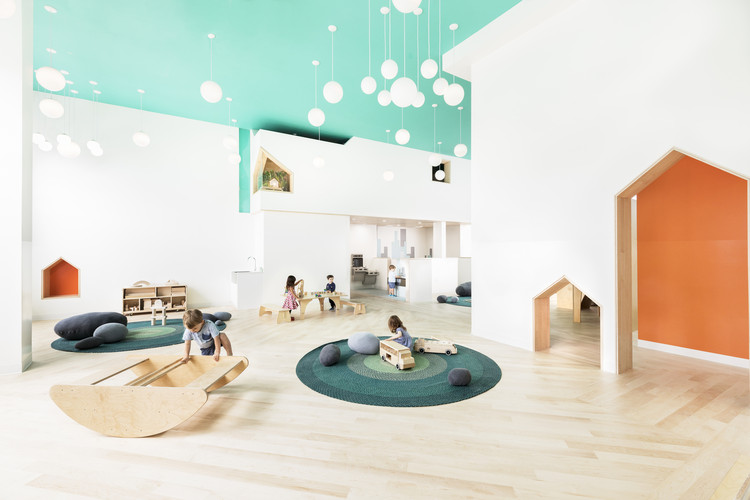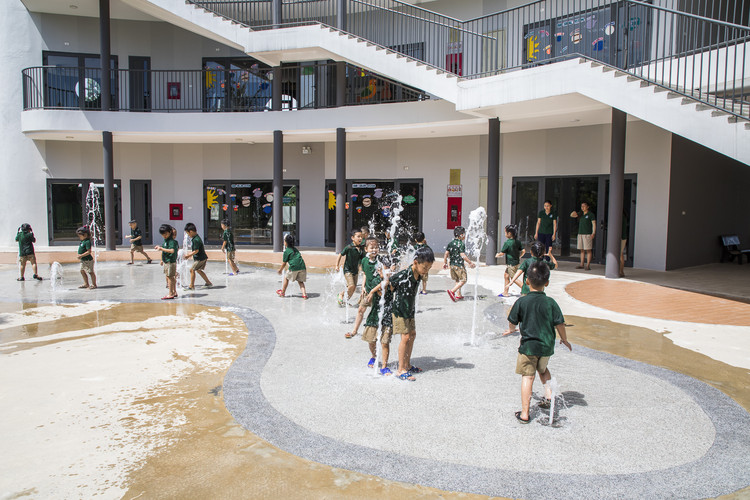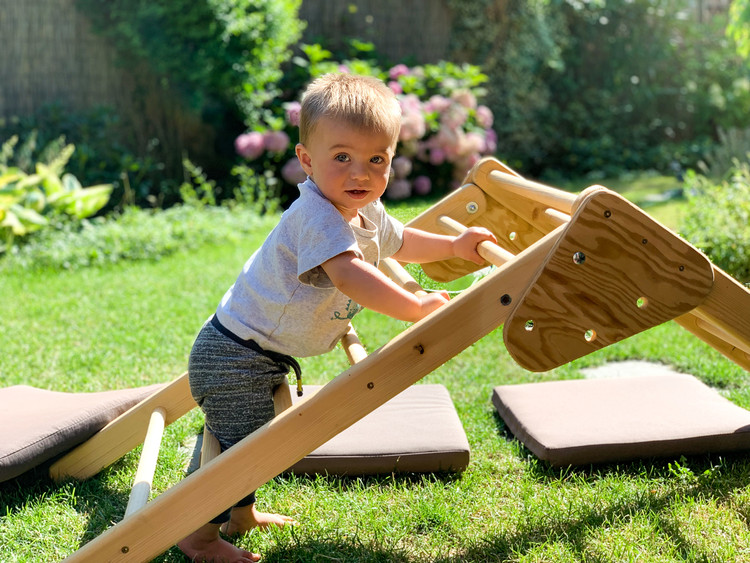
Emmi Pikler was a Hungarian pediatrician who introduced, in the years after World War II, a new philosophy on early childhood care and learning for children up to the age of 3. It was after the birth of her first child that she began to question: what happens when a child is allowed to develop freely? The observed results culminated in the introduction of a new methodology.
The Pikler approach facilitates the free development of children by caring for their physical health and providing affection but largely respecting their individuality and autonomy. Following this logic, intervention by adults becomes mostly unnecessary. Rather, for the child to experience space while moving freely, certain care must be taken in the preparation of the environments themselves.
What must be considered when designing a space focused on freedom of movement?
Piklerian environments offer an affective approach to childcare, since it is believed that a feeling of belonging helps build up the self-confidence of individuals, especially babies. We recently talked about applied neuroscience in children's spaces. However, in environments that specifically follow Pikler's approach, it is also recommended to follow the following tips:
- Design the void
To develop freely, young children need free and fluid space. It is in this "void" where they will be allowed to move and develop their motor skills.

- Be careful with the floor
The floor serves as a support and also as a base for exploration, so it is essential that the rooms are lined with floors hard enough to allow the babies to stand (and, eventually, take their the first steps) while simultaneously contributing to the maintenance of a correct upright posture. Another point to consider is that floors must be a comfortable temperature, so cold materials should be avoided. The most commonly recommended solution is to use a wooden floor.

- Safe furniture
Since children will be able to move freely in the environment, it is necessary to take into account that they will climb, push, pull, and touch all the furniture that is within their reach. For this reason, it is essential to use preferably fixed furniture, without wheels. These items should have a smooth finish, avoiding sharp points and materials with rough or chipped textures as much as possible. Another point to consider is that multi-functional pieces work well in this environment, serving both as storage and as a safe support for children's movements.
A very common piece of furniture in Piklerian interiors is the low bookcase with a wide base, as it is more stable and, therefore, less likely to move or fall amidst children's movements and play. This type of furniture allows even the smallest babies to use them with ease.
The dresser or changing table should be located at a comfortable height for the caregiver but may include a protective grid to ensure the physical safety of the baby while hygiene is being performed. Personal hygiene items should always be within reach of the caregiver, either during diaper changes or while bathing.

- Lighting
In previous articles, we mentioned some fundamental requirements for effective lighting in spaces for children. You can read a series of tips here.
- The importance of silence
A calm (and quiet) environment is very favorable for the natural development of children. It provides more concentration and also contributes to learning.

- Safety
As stated above, when free exploration is allowed, it is necessary to ensure the safety of the environment. Designers should provide handrails at child height, install safety gates on stairs, add plug protectors, eliminate electrical cables in the middle of high-traffic areas, and avoid small parts that can become unnecessary obstacles. If you want to include plants for the space, you must verify that they are not harmful if accidentally consumed.

- Contact with the open air is essential
The need to be in contact with nature is fundamental to the Pikler approach. To get an idea, in Piklerian nurseries, naps are held in cribs arranged outside in the open air. Therefore, the smart design of these exterior areas is essential. It is advisable to add elements such as sand boxes, wooden play structures, and slopes that serve as slides, stairs, and shallow pools.

Wooden Furniture for Indoor and Outdoor Spaces
The main objective of the furniture in schools and Piklerian environments is to teach through exploration, not simply to entertain. Therefore, certain tailored toys are recommended for use: the most common of these is the "treasure basket," a basket made of a natural material containing everyday objects made of different materials, except plastics, alongside some other unstructured toys.
The wooden Pikler kit (larger toys) was developed to facilitate the exploration of the different motor skills that children must acquire during their first 3 years of age (climbing, descending, crawling, etc.). Its objective is to indirectly teach important concepts like high and low; in and out; above and below. The most commonly used are:
The Complete Obstacle Course
Composed of a simple ramp, a carpeted ramp, a ramp with bars, and a triangle, this is a play item in which all the "obstacles" are interconnected with the base, forming a single circuit.

Pikler Tunnel
These are independent cubes that can be configured in different ways to create a wide variety of routes. Thus, in addition to requiring physical activity, they also stimulate imagination and creativity. Each cube measures, on average, 50 centimeters on each edge.
Rocking Boat Emmi Pikler
Sixty centimeters wide and 1.20 meters long, this toy can be used by up to 4 kids at the same time. When its users turn, it turns into a set of stairs that go up and down, training this type of movement in a fun way.
Pikler Triangle
The Pikler triangle was created with the aim of encouraging children to follow their instincts by climbing and hanging from objects safely. It allows children to develop skills such as motor coordination, physical strength, balance, and agility. There are several versions available, but the most commonly used is the option combined with the Pikler ramp, becoming a type of slide.

Pikler Rocker
This is one of the most versatile objects developed by this methodology. It can be used as a swing, ladder, stool, coffee table, tunnel, bridge, seesaw, hut, etc. It is suitable for younger children, who must use it while sitting, or for older children, who can use it while standing.
Pikler Bridge
Developed for children up to 3 years old, its functions are to help with motor coordination and autonomy.

Understanding the importance of space for the physical and psychological development of children (especially minors), it is essential to take into account the criteria delineated by important scientists such as Emmi Pikler or Maria Montessori. They both believed that free exploration in a prepared and safe environment would influence how children relate to themselves and to others in the future. Therefore, if you are designing spaces for users from 0 to 6 years old, review the information contained in the following articles (although they are not limited to these specific philosophies):
- How to Stimulate Children's Autonomy Through Architecture and the Montessori Method
- Improving the Educational Environment with the Reggio Emilia Approach
- How to Design Schools and Interiors Based on Waldorf Pedagogy
- Public Bathrooms for Children: Design Tips and Inspiration
References
- COCITO, Renata Pavesi. "A ABORDAGEM PIKLER E A ORGANIZAÇÃO DO ESPAÇO PARA BEBÊS NA EDUCAÇÃO INFANTIL". Available here. Accessed on August 11, 2020.

